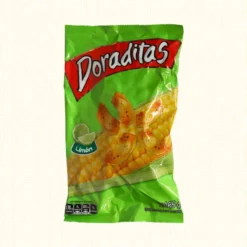In Latin America, cheese is a fundamental ingredient in the kitchen and varies considerably from country to country. Below are some of the most popular cheeses in the region and how they are used in local cuisine:
Queso Fresco:Soft, creamy, and slightly salty, ideal for tacos, enchiladas, arepas, empanadas, salads, and as a filling in various dishes.
Queso Cotija: Dry and salty, commonly used as a topping for tacos, elotes (corn), and other dishes. It is also sprinkled on soups or salads, or even some desserts.
Queso Oaxaca: With a stringy texture and great for melting, it is used in quesadillas, tamales, molletes, and is also perfect for making melted cheese or as a filling in sandwiches and pizzas.
Queso Manchego (Latin American style): Aged and firm, ideal for grating over dishes like pasta, salads, or soups. It’s also perfect for pairing with wines or charcuterie.
Queso Añejo: Aged, firmer, and saltier, ideal for grating or crumbling over tacos, soups, or salads. It is also used in rice or beans.
Queso de Cabra: With a strong and distinctive flavor, it is commonly used in salads, as an appetizer with nuts and honey, or in empanadas and meat sauces.
Queso de Hoja: Fresh and soft, wrapped in banana or cane leaves. It is commonly used to make fried cheese and in dishes like humitas or empanadas in Peru.
Queso Blanco: Soft and creamy, perfect for filling arepas, tacos, or accompanying dishes like beans or salads. It is also used in desserts.
Queso Tulum: Fresh and soft, ideal for tacos, ceviches, or as an accompaniment in cold dishes.
Queso Crema: Soft and creamy, used in sauces, desserts, cakes, or as a filling for breads and cookies. Also excellent for spreading on bread or savory crackers.
Queso Requesón: Similar to ricotta, with a grittier and more moist texture. Perfect for tamales, empanadas, cakes, or as a filling for pasta and in sweet dishes like cheesecake.
Cheeses in Latin America are essential in a wide variety of dishes, offering a range of flavors from soft and creamy to firm and cured. Each type of cheese adapts to different recipes, both in everyday cooking and celebrations, reflecting the region's rich cultural diversity.
 Doraditas de Limón
1 × $0.80
Doraditas de Limón
1 × $0.80 Yucatekas Chips Diana
1 × $4.00
Yucatekas Chips Diana
1 × $4.00 Doraditas Amarillas BBQ
1 × $0.80
Doraditas Amarillas BBQ
1 × $0.80 Jalapeños Diana
1 × $4.00
Jalapeños Diana
1 × $4.00 Maiz Chino Diana
1 × $0.80
Maiz Chino Diana
1 × $0.80 Tostitos Salsa Verde Chips
1 × $4.00
Tostitos Salsa Verde Chips
1 × $4.00
 Yucatekas Chips Diana
Yucatekas Chips Diana  Doraditas Amarillas BBQ
Doraditas Amarillas BBQ  Jalapeños Diana
Jalapeños Diana  Maiz Chino Diana
Maiz Chino Diana  Tostitos Salsa Verde Chips
Tostitos Salsa Verde Chips 